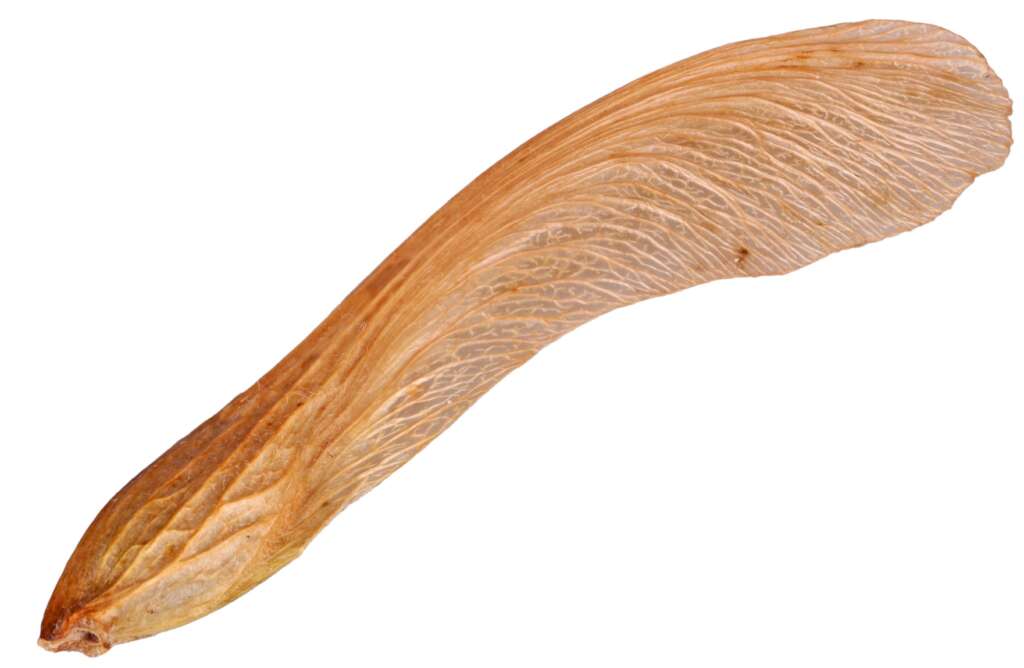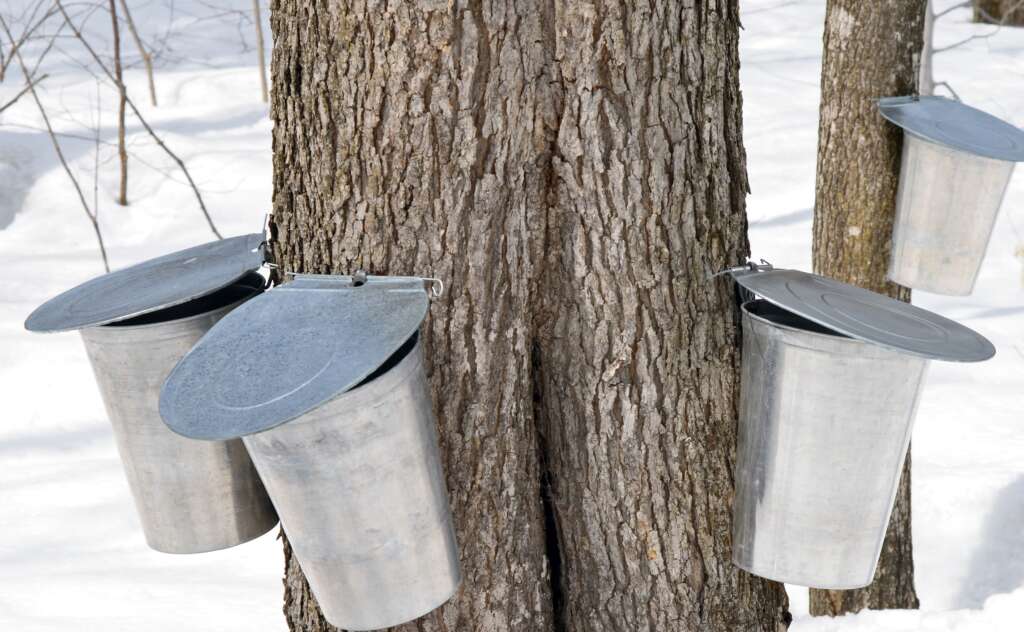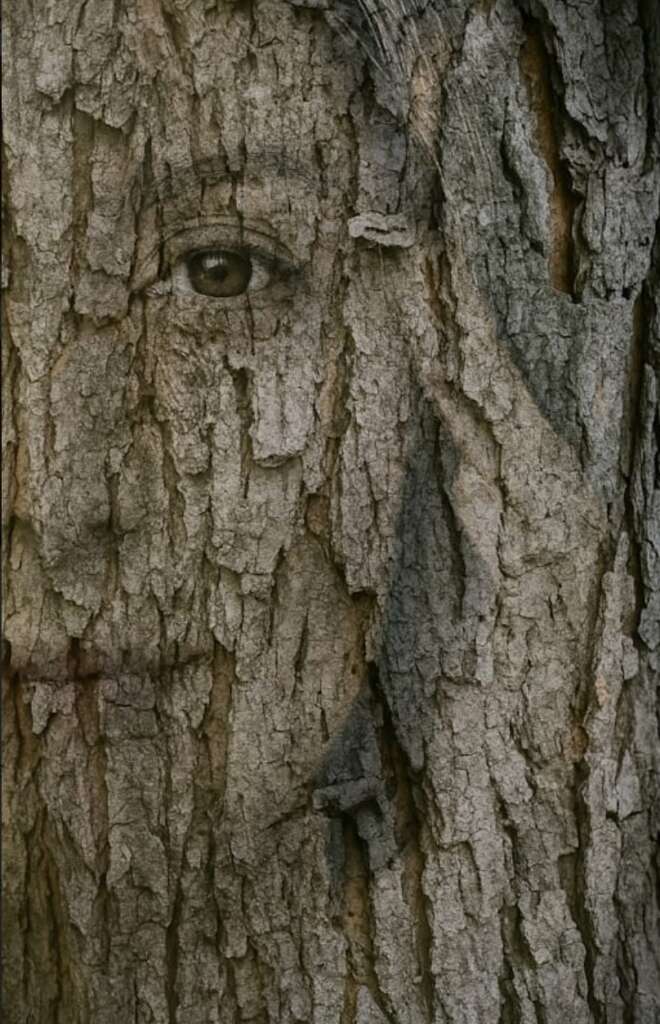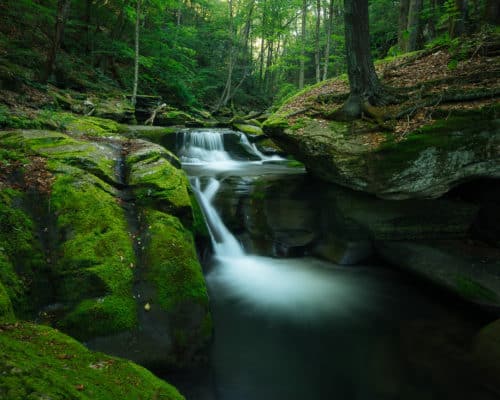Of all the marvelous biomes I’ve lived in and experienced in my life, from the polar ecosystem of the Arctic to the tropical, broadleaf jungles of Asia; from the vanishing wetlands of the Everglades, to the Blackland prairie, I find that the hardwood, deciduous forests of New England are my favorite. They watched over me as I grew as a child. And of all the hardwood trees such as the ash, the walnut, the oak and the hickory to name just a few, I prefer the Silver maple (Acer saccharinum) to the rest. Recently, I’ve had some time to reflect on this species.

For the past week the yards and roadways of every place my wife and I went were covered with the seeds (samaras) of the silver maple. I was amazed. As an Aspie, I often engage in repetitive behaviors. In this case, I would scoop up a handful of samaras and slowly dissect them one-by-one, examining the delicate network of vascular bundles on the wing of each seed. Each samara has a predetermined center of gravity that allows a pair to whirl through the air. The exact dynamics of the sophisticatedly designed wings of the seeds are only now being understood with the use of vertical wind tunnels and engineering software. Yesterday, however, I took a closer look at the embryo of a seed after I had exposed it by removing its thick, protective covering. Each embryo includes a root (radicle), stem (hypocotyl), and very first leaf bud (cotyledon). The embryo was tender, bright green and ready to start its life on earth. My thoughts wandered unexpectedly to the many times my nursing classes visited the hospital morgue where they trained. Here, they would learn gross anatomy. We had human hearts, kidneys, lungs, brains and other organs in cannisters of formalin or some such preservative. The students could trace the chordae of the heart that seat the bicuspid and tricuspid valves and they could feel the prickly texture of the cortex of the brain. They could examine the inside of a kidney at their leisure. In one container, there was a twenty-one-week-old intact fetus which I held in my hands on innumerable occasions and which my students gingerly passed around. The fetus had eyebrows, fingernails and other features as I recall. Strangely, it was something of a holy experience to me each time I cradled this ne’er to be born girl in the palms of my hands. I refuse to believe that it did not have at least some effect on my students as well, regardless of their views of when human life begins.
My mind returned to the present, and I looked away for a second while my thoughts returned to the embryo I now held in these same hands. I placed the heart of the samara on the grass. It may not survive. Or it may. But that epiphany during these few moments reminded me that all living things are indeed holy before God in some sense, and I decided to find some other absentminded behavior to stimulate me from then on.
We are strictly admonished in Scripture to worship the Creator and not the creation. Still, we are reminded that we can see the Creator in everything there is, whether a twenty-one-week-old human fetus or the twenty-one-day-old embryo of a fertilized seed from a maple tree. As St. Paul says in the first chapter of Romans:
“. . . since the creation of the world God’s invisible qualities—his eternal power and divine nature—have been clearly seen, being understood from what has been made, so that people are without excuse.”
I can see God in the land on which I live and will someday die, a fertile valley surrounded by mountain ranges that testify to the Paleozoic times when they were first thrust upwards towards the heavens. I can see God in the shower of seeds that cover the green grass whenever a south breeze blows. And I can see God in the Silver maples on our lot and the birds and mammals that seek shelter in their boughs. The question is, can you see God in the world around you?
HOW SILVER MAPLES CONTRIBUTE TO OUR QUALITY OF LIFE
Many different birds can be found in the Silver maples in our yard. Black-capped Chickadees, Goldfinches, Blue Jays, Song Sparrows, Red-eyed-Vireos, Bluebirds, Gray Catbirds, Northern Cardinals, American Robins, Red-winged Blackbirds, House Finch, American Crows, Mourning Doves, Dark-eyed Juncos, Tufted Titmice, Evening Grosbeaks and an assortment of woodpeckers are seen (or heard) daily. I use the Merlin identification application from Cornell University labs which I have downloaded on my phone to see who is in the neighborhood when I go out each morning. On an average morning, I can hear a new bird every twelve seconds or less until I reach more or less a dozen different species in two and one-half minutes.
There are also squirrels and chipmunks that live in the maples around my house. One may also discover racoons and owls, though not at the moment our maples. Still, it is a thriving community and the Silver maples are their homes. Silver maples are prized among the birds and mammals because of the dense canopies of the trees and the sprawling branches which provide birds and mammals and their brood with shelter from storms. And with the large canopy comes innumerable leaves that are inevitably shed and converted to colorful leaf litter for future generations to feast on. Silver maples also produce pollen which attracts bees and other insects. The birds and small mammals that one finds in the vicinity of Silver maples also consume the seeds of the tree.
As sprawling as the branches of the Silver maple tree are, so is the root system, and such a root system is necessary to control the erosion of topsoil and other important layers of soil. The towering size of the tree also allows for more than the usual amount of carbon sequestration which bodes well for life on this planet.
Finally, Silver maples are harvested for their wood, and hopefully are replaced with young trees starting a life of their own for future generations of our species to enjoy.
THE BEGINNING OF THE LIFE CYCLE
As a general rule–because no one can know for sure–only about one in four silver maple seeds are thought to actually germinate. Before that, they spin like little helicopter propellers with their cojoined sibling and are carried far and wide by the breeze, down streams of water, into the bed of trucks and the window well of cars where they may travel hundreds of miles from where they were released. Some seeds lack embryo’s and are destined to be barren. Many fertilized embryos land in inhospitable areas where they cannot root or are denied the water they need to thrive. A few do survive, but many others do not. This is life on a planet crippled and disfigured by the entropy of disobedience and rebellion towards its Creator.
Silver maples produce seeds in spring, rather than in the fall like other hardwoods trees, such as oaks, hickories and walnuts do. There are many advantages to this. As an example, temperature and rainfall are often higher in the spring than the fall, at least where these Silver maple trees are found. So, they can take root immediately under the mildest possible growing conditions. Also, in the spring, the overgrowth in the wild is still recovering from the winter, so the competitive advantage of the Silver maple seeds is more favorable.
Silver, Red, Black, and Sugar maples can all be tapped for syrup. The sap starts to appear when daytime temperatures rise above freezing and nighttime temperatures fall below freezing. These fluctuations cause the necessary pressure changes needed to cause the sap to flow. In New England and Canada, this typically begins in late February to early March, but can continue into mid-April. The species of the maple tree is another factor in anticipating when the sap will appear.

Indigenous Americans were said to have seen animals licking the clear, watery discharge from these trees in the spring. Tasting it themselves, they found it to be sweet. Once it was discovered how to process this sap, buckets were mass manufactured to capture the raw syrup. I’ve seen as many as six buckets encompassing the girth of a large tree. The buckets hang from a hook or spout that guides the syrup into the buckets. The buckets have a slopped or peaked roof to keep rainwater and other debris out. Once every few days in February or March, a wagon would be towed to the tree with a vat to collect the sap and take it to the syrup house for processing, Today, piping is often used to collect the sap directly and funnel it to the syrup house. Sugar maples produce the most volume of sap of all the maples and the sweetest (with 2%-3% sugar content), but Silver maples are not far behind.
ARE TREES SENSIENT?
A strange question. No, not as far as we know, though they have unusual and little known abilities as I discuss here and here. I realize that I sound equivocal in my answer and I suppose I am. It is just that my understanding of our existential reality is more accommodating than that of most people. Trees (including the Silver maple) perhaps have some ability to perceive danger in a way that is not clearly understood, but they do not have consciousness as far as we know.

The ancients Greeks thought that there were spirits in water (Nymphs), in grottoes (Oreiades), in fields (Napaeae) and in trees (Dryades.) The Greeks prayed and sacrificed to them, particularly as they were about to embark on a trip. They did not want an insulted Naiad with an attitude to drown them while crossing a river. Other religions such as the Druids in Northern France and the British Isles and the Norse countries (including Germany) which practice Ásatrú had the same basic notions as the Greeks did. In some rural Asian and African countries today, these beliefs and superstitions persist even today as missionaries will assure you. To a psychologist, these tenets are based on animism. To Christians, they are plainly pagan. Trees, however, are important in the Bible, from the ordinary, nondescript fig tree in the gospel, to the Sycamore tree Zacchaeus climbed, to the Tree of Life, itself. Trees, as every other thing in creation, bear witness to the glory of God, including Silver maples. So, once again we have strict admonishments in the Bible not to pray to trees (or rocks) as if they had some power, but to respect them and cherish them nonetheless.
ENTER THE ENTS
J.R.R. Tolkien in his Trilogy did assign sentient life to trees he calls Ents. This word apparently arises from the Old English word “ent” or “entā,” meaning a giant or a large creature. Almost a century ago, Tolkien realized the zero sum game that exists between trees and twentieth century developers. For some people today, a lovely strand of birch or oak trees behind a small but busy restaurant or store is just another opportunity or excuse to build a car park. In South America, 10,000 acres of the Amazon rain forest are burned each day in the name of progress. How can our planet sustain such a loss when the very oxygen we breathe depends on trees?!

In Tolkien’s The Two Towers, the Ents suffer at the hands of Saruman (who typifies today’s short-sighted, insensible builder.) While it is not a crime to prudently harvest trees for fuel or to create human habitats, we must question our motives and intentions against our charge to be good stewards of God’s creation. To wantonly cut down oak trees that have lived since the early years of our republic just so someone can get a better view of a landscape probably pushes the envelope beyond what it should be stretched. In Middle Earth, the Ents symbolize the resilience of nature and the hope that the original things may be someday restored in the coming age if not in this one. Thus, decades before we were being warned about the dangers of widespread deforestation and environmental pollution, Tolkien had already become convinced that this would be a problem for future generations to come.
SO, IF A SILVER MAPLE WOULD HAVE A PERSONALITY, WHAT MIGHT IT BE?
It is a human trait to anthropomorphize things that are not human. Men do this with their cars and trucks, assigning feminine pronouns to refer to them. Then again, artists may do this to develop emotional connections with landscapes or the nonhuman subjects that they paint. Poet Joyce Kilmer did this with trees as she honors them in her poem of the same title:
“I think that I shall never see
A poem lovely as a tree.
A tree whose hungry mouth is pressed
Against the earth’s sweet flowing breast;
A tree that looks at God all day,
And lifts her leafy arms to pray;
A tree that may in Summer wear
A nest of robins in her hair;
Upon whose bosom snow has lain;
Who intimately lives with rain.
Poems are made by fools like me,
But only God can make a tree.1“
Trees don’t have mouths, arms and hair of course, but we might be excused if we assign personality traits to them. Mature trees, which add value to our property stand like silent sentinels, witness the growth of our children, provide a sense of continuity between our generations and so on. Elsewhere in my blog I mention how trees can help us cope in life, by (all other things being equal) lowering our blood pressure. That’s not to say there is some sort of mojo, Mother Earth magical, medicinal properties to them. But an attractive tree or a small grove of trees can provide a suitable setting for us to sort out our thoughts when we are lonely or stressed. John Steinbeck’s protagonist Joseph Wayne in the novel To a God Unknown would be a good example.
And how many of us have not enjoyed lying on a summer’s day in a hammock strung between two trees?!
I would envision that a person who wanted to mimic the Silver maple tree characteristics would be slender as the tree is so and have long, flowing, silver or gray hair. There would be a sense of calmness or serenity in their eyes. Resilience and nurturing would be two other adjectives that might be appropriate as well. Silver maples prefer more of an abundance of water than other tree species do. Yet, they can adapt to other sorts of habitats as well. And nurturing is notable if for no other reason than the fact that many birds and mammals choose Silver maples in which to raise families of their own.2
The next time you find yourself near a tree, take a moment to touch it, to pay close attention to it and to enjoy the moment to its fullest. Then, give thanks to God for the opportunity to harmonize with something larger than ourself.
FOOTNOTES
1Copyright Credit: Joyce Kilmer, “Trees” from Poetry 2, no. 5 (August 1915): 153.
2Some of these attributes were suggested by Apple AI.





Dee
May 23, 2025Simply just beautiful.